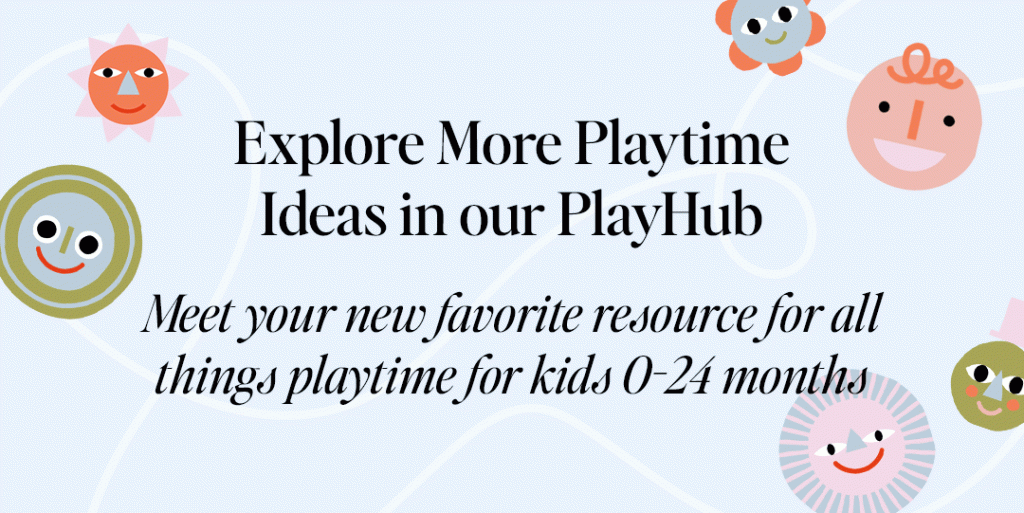In February 2022, the Centers for Disease Control and Prevention (CDC) released a revised version of their developmental milestones checklists. These checklists are commonly utilized by pediatricians and parents to assess whether or not a child is on track with general development. The checklists assess a child’s gross motor, fine motor, language, and social development. The largest change to these checklists modified the age for developmental benchmarks. Previously, developmental benchmarks were classified by when 50 percent of children had acquired the specific skill; however, the revised version now classifies developmental benchmarks by when 75 percent of children acquire the skill.
Chronically on a budget and short on time? Opt for ordering a personalized Father's Day card online and delivering it to their door. Use code EVERYMOM for 50% off your first card!

Why change the milestone guidelines?
The main reason for the change was to help identify delays and provide earlier intervention. By benchmarking skills at the age when 75 percent of those children have developed the skill, it will be easier to identify when children are delayed. For example, the previous age for walking was 12 months, when 50 percent of children acquire walking, but now walking is benchmarked at 15 months of age, when 75 percent of children acquire walking. By classifying walking at 15 months, those children who aren’t walking by then can be more consistently referred to physical therapy. Previously, when children weren’t walking by 12 months, most pediatricians didn’t refer to PT, since half of age-related peers were still also not walking. Thus, the revised developmental checklists are going to be helpful in making sure that children are referred to the appropriate services at earlier ages.
However, in the revised version of the developmental checklists, you may notice that an important gross motor skill is no longer included. Crawling has been removed from the gross motor checklist, due to a reported lack of sufficient research on the need for crawling. Unless there’s an underlying condition or diagnosis, children who don’t crawl will still go on to walk and progress with appropriate gross motor skills, and thus, it was removed from the checklists. Even though a child will still progress through the appropriate acquisition of gross motor skills without crawling, crawling is still a very important skill for children to acquire! Here are a few reasons why:

Balance and coordination
Crawling promotes the development of many other important strengths and attributes. First and foremost, crawling promotes balance and coordination. It involves utilizing both sides of the body in a reciprocal pattern, which lays the foundation for future skills involving similar patterns, such as climbing, stair navigation, skipping, etc.
Core strength
Crawling is one of the very first ways babies figure out how to use their tummy muscles for mobility. Babies first activate their core muscles with the happy baby pose, and then with rolling, but crawling really starts to target the core to help babies learn how to use their bodies for more effective mobility. Many pediatric therapists will ask about a child’s history of crawling because it’s believed that a lack of crawling can contribute to difficulty with core activation later in life, potentially leading to back pain, balance issues, and other injuries in the future.
Shoulder girdle development and visual benefits
Crawling also targets shoulder girdle development, since babies are utilizing their arms for weight bearing in a crawling position. Crawling additionally promotes improved spatial awareness and depth perception, since babies must consistently shift their gaze from the floor below them to the environment surrounding them. This is important for future school participation when a child needs to shift their gaze from the front of the classroom to their desk.
Environmental and sensory exploration
Crawling is one of the first ways a child can explore his or her environment, and this exploration is crucial to general development and sensory integration. By being allowed to explore the environment, babies will experience different textures, surfaces, and objects. And while your child will eventually be able to explore his or her environment without crawling, crawling allows this exploration to be more of a full-body experience.

Pelvic floor development
Lastly, recent research has begun to support the theory that crawling is important for pelvic floor development. The pelvic floor is a bowl-shaped group of muscles in your pelvis that mirrors the diaphragm, or the main breathing muscle underneath your lungs. And crawling helps promote proper movement of the diaphragm, which in turn leads to proper development of the pelvic floor musculature, which is important for continence in the future. Additionally, crawling promotes the proper spinal curvatures, which are crucial to pelvic floor function.
Crawling promotion
So now that we know why crawling is so important, how can we promote it? Your child will very likely naturally learn to crawl if provided with ample opportunity to develop the skill. Each new gross motor skill takes thousands of hours to develop, and this happens best when babies spend time uncontained on the floor or in an enclosed play area. Time spent in containers (think Bumbos, swings, jumpers, saucers, etc.) is time taken away from floor play, thus taking away from those thousands of hours needed to develop a new skill.
As physical therapists, we promote lots of floor time, specifically tummy time with toys in all directions, in order to encourage your baby to start moving. And if at any point you are concerned with the way your child is mobilizing or developing, physical therapy is always available—just talk to your pediatrician and ask for an order.

Mary Noreen Cheng, PT, DPT
While not a mother yet, Mary Noreen gets her baby fix as a full-time pediatric physical therapist in Chicago. She loves to advise on all-things related to gross motor development and kids health, and especially loves to snuggle with her dozens of cousins and godchildren.




 "
"